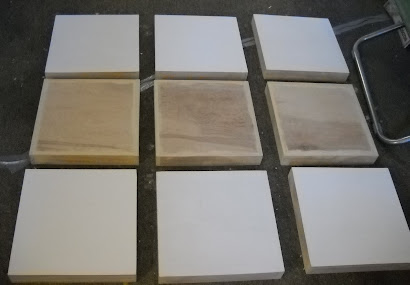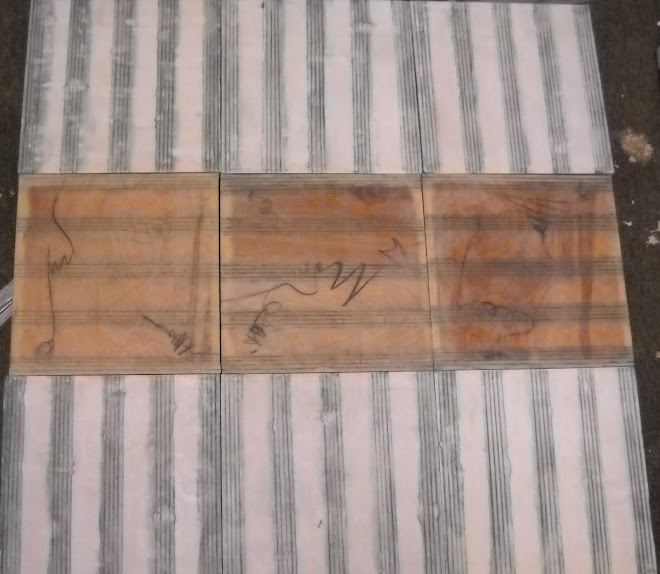Lacuna
This is the first beginning steps into encaustic painting. While waiting for supplies, I set up the grad studio at Winthrop, and built my worktable (my husband was impressed). It took a couple of weeks for the materials used in encaustic painting (refined beeswax, damar resin, carnuba wax AND controlled heating elements, etc). While waiting I built my first concept for the painting, nine (9) approx 13x13" birch plywood panels with white pine 1x3"frames. This picture shows the panels, six (6) of them gesso'd with encaustic gesso and three (3) left plain birch - all of them fused with a double layer of pure beeswax to set the foundation for the painting.
I actually drew the random graphite marks prior to fusing the first layers of beeswax - that's what it looked like below.
Cutting in a tone
At this stage, I painted on two coats of encaustic medium w/out pigment and fused them on to the surface of the panels. I then cut in straight lines which I taped off on one side and then rubbed a blended oil hue (greyish blue-green) into the lines and wiped off, covered with another layer of encaustic medium and fused.
While fusing I began to break up the layers so that I could break up the oil lines and have them float between the layers of clear encaustic paint. This "tone" gave me a platform to begin to work with the painting concept.
Hester Panim
Here is where I am two weeks later. I am into the fifth or sixth layer and now I am working back into the surface of the piece. Part of my artistic journey from painterly oil paintings and collages has been obsession with working the surface of the art piece, constructing and deconstructing. This medium has already given me great joy in its flexibility and versatility in working with the surface as a way to express my narrative. In addition I am finding that I want to move the surface in and out of three dimensional space which works well with the concept of memory.
I began to build boxes that I affixed to the panels of wax. The panels are broken up like memory yet built from a stable shape (equal square panels). The internal boxes are irregular attached/unattached to the wax memory. They provide me an opportunity to increase the ethereal effect.








